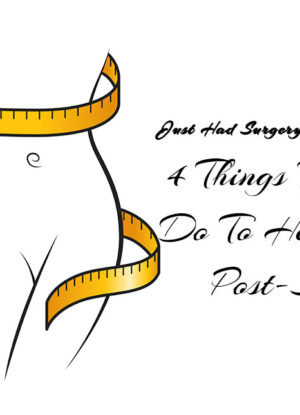No products in the cart.

Postpartum Belly – How to Use a Body Wrap for Maximum Effect
The postpartum belly brouhaha! This is a constant source of headaches for all new mothers. Before you get anxious about getting your pre-baby body back — or even just returning to your previous routine, let’s celebrate your birthing journey. But — be kind to yourself! Before we get into how to use postpartum belly wrap, you’ve just done something extraordinary and brought a new life into this world!
Forget the 9months of uncomfortable body changes, plus hours of grueling labor to give birth; enjoy the smell of your fresh joyous bundle, the joy of delivery, and holding your bundle of joy in your arms.
TABLE OF CONTENT
It would help if you let yourself absolutely rest, recuperate and rejuvenate (yes, the three big R’s we tend to ignore after giving birth) in the first two to three weeks after birth. You’ll feel better and heal faster in the long run. Don’t hesitate to ask for help whenever you need it. You don’t have to or need to do it all alone at this time.
Once you feel ready to get back on your feet (no pressure, please), you might consider belly binding as part of your arsenal of postpartum belly-blasting solutions.
What is Pospartum Belly Wrap?
Postpartum belly wrap is an age-old practice – in many cultures – of tightly tying the abdomen in a hold to help push down the size. Recent studies reveal that belly wraps might help with pain, as well as healing after delivery. It might support your organs and muscles as they move back into place after having a baby.
In Africa, it was done with a piece of long wrapper or thick cloth to be tied around the waist to help support your body after childbirth. This practice is helpful as your body continues to go through several changes after giving birth, and this wrap support can help your body heal.
Granted that past generations used simple pieces of muslin cloth, today belly wrapping can range from traditional fabric lengths of cloths to postpartum girdles made from varying materials.
In recent times, the design for the belly wrap has been modified to be more comfortable – even fashionable for chic/fashion-conscious moms to get in on the benefits of the belly wrap without losing their sense of style.
Belly wrapping is a process that’s designed to make postpartum recovery a little easier and might help your body heal faster, too.
While it may be true that the internet is crammed with so many mommy influencer’s tips for the postpartum belly as a way to reclaim their pre-baby bodies, we decided to take a deeper dive into how to use it safely and the benefits of belly wrapping.
How to Safely use Postpartum Belly Wrap
After giving birth, your body needs to readjust those muscles and organs back to their original place. When done correctly, belly wrapping the abdomen and around the hips can provide much-needed support to your pelvic floor.
Please note that postpartum belly wraps are not a ‘magic pill’ for weight loss, neither are they, waist trainers.
Belly wrapping safely depends on how you gave birth and the wrapping method you plan to use. If you’re planning on using the bengkung belly (use a length of fabric that’s 9 inches wide and 16 yards long.
The goal is to wear the wrap for at least 12 hours a day, for a minimum of 30 days or more). This wrapping method can only be used if you gave birth via the vagina and can be used right away, not if you gave birth via surgery.
If you delivered via C-section, you should wait until your incision is healed and dry before applying it. The best bet is to consult with your doctor or midwife on the best route.
If you opt for more modern style binders or postpartum girdles, you can often use them right away. However, always talk to your doctor or midwife before you begin belly wrapping.
No matter the option you choose, you can wear the belly wrap for as long as you need to each day to feel comfortable. However, experts recommend that you only wear them for 2 to 12 weeks since prolonged wear can have profound effects.
Sadly, as simple as it all seems, wearing a belly wrap in the postpartum stage isn’t for everyone. Yes, they can lower pain from surgery and support your recovering body, be that as it may, there are some things you should know.
Wrap up: Wear from down up. The best way to wear a postpartum belly wrap is to use an elastic wrap and start at the hips and wrap up. Wrapping the wrong way can cause downward pressure on your pelvic floor and can cause prolapse.
Give yourself a break: It is not a good idea to wear a belly wrap all day. If you wear a wrap for too long, your abdominal muscles can weaken and cause more problems.
Don’t use trainers, corsets, or cinchers if the goal is a postpartum wrap: These materials are tight and stiff, plus they are not safe to wear for the purpose.
Benefits of Postpartum Belly Wraps
Postpartum belly wraps are sometimes called a belly band or a belly binder. These are some of the benefits of using a postpartum belly wrap.
- Pain relief.
- Better movement.
- Blood flow increase.
- Muscles and incision healing.
- Reduces swelling from surgery.
- Posture support.
- Pelvic floor support.
- Gentle compression that holds muscle and ligaments safely in place as your body heals.
Recuperating from childbirth is a process, just as conception and delivery was a process. But there are ways to help provide your body the necessary support.
Finally, as much as the points above will help you in the recovery process, it is important to note that postpartum belly wrapping along with a healthy lifestyle, adequate rest, and diet are factors to consider for maximum effect to help your body heal.







Leave a Reply